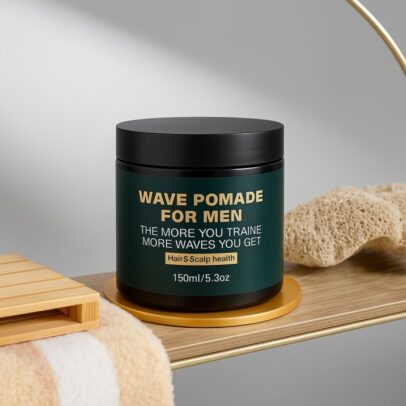Taming the Frizz: Your Guide to Repairing and Preventing Hair Breakage

We all want strong, healthy, and lustrous hair. But sometimes, a look at our brush or a run of our fingers through our strands reveals a less-than-ideal reality: tiny broken bits and frizzy ends. Hair breakage is a common and frustrating problem, and it can feel like you’re fighting a losing battle to achieve your hair goals.
But what exactly causes hair to snap, and more importantly, can you fix it? Let’s break it down.
The Culprits: Why Your Hair is Breaking
Hair breakage isn’t just about split ends. It’s a sign that the hair shaft is weakened and can no longer withstand normal wear and tear. The causes are often a combination of factors, both internal and external.
- Chemical and Heat Damage: This is one of the biggest offenders. Frequent hair coloring, bleaching, perming, or chemical relaxers can severely weaken the hair’s protein structure. Similarly, the overuse of heat styling tools like straighteners, curling irons, and blow dryers strips the hair of its natural moisture, making it brittle and prone to snapping.
- Rough Handling: How you treat your hair matters. Aggressive brushing, especially when your hair is wet and at its most fragile, can cause significant damage. Vigorous towel drying by rubbing can also create friction that leads to breakage.
- Tight Hairstyles: Constantly pulling your hair into tight ponytails, braids, or buns puts immense strain on the hair follicles, leading to breakage at the root and even a type of hair loss called traction alopecia.
- Dryness and Lack of Moisture: Dry hair is brittle hair. When your strands don’t have enough moisture, they lose their elasticity and are far more likely to break. This can be caused by harsh shampoos, a lack of conditioning, or even environmental factors like a hot, dry climate.
- Lack of Regular Trims: While it may seem counterintuitive if you’re trying to grow your hair, skipping trims is a surefire way to encourage breakage. Split ends will travel up the hair shaft, causing more widespread damage.
- Nutritional Deficiencies: Your hair’s health is directly linked to your diet. Deficiencies in essential nutrients like iron, zinc, biotin, and protein can make your hair weaker and more fragile.
The Repair Mission: Can You “Fix” Broken Hair?
The truth is, once a hair strand has broken, it’s impossible to literally “repair” it and piece it back together. However, you can absolutely mend the appearance of damage and, more importantly, strengthen the rest of your hair to prevent future breakage.
The key to repair is a multi-pronged approach that focuses on deep conditioning, gentle care, and a protective routine.
- Get a Trim: The first and most crucial step is to cut off the damaged ends. This stops the split ends from traveling further up the hair shaft and gives your hair a clean slate to grow from.
- Deep Condition, Deeply: Hair masks and deep conditioners are your new best friends. Look for treatments with ingredients like natural oils (coconut, argan), shea butter, and proteins (keratin, silk, collagen). These products penetrate the hair shaft to replenish moisture and strengthen the hair’s internal structure.
- Use a Protein Treatment (But Be Careful): Protein is the building block of hair. A protein treatment can help to fill in the gaps in damaged strands, making them stronger. However, be cautious not to overdo it, as too much protein can make hair stiff and even more prone to breakage. It’s often recommended to alternate between hydrating and protein-based treatments.
- Gentle is the New Glam:
- Brush with care: Use a wide-tooth comb to gently detangle your hair, starting from the ends and working your way up. Never yank or pull through knots.
- Ditch the harsh towel: Instead of vigorously rubbing your hair with a terrycloth towel, gently blot or squeeze out excess water with a microfiber towel or an old cotton t-shirt.
- Reconsider your hairstyles: Opt for looser styles and use soft hair ties or scrunchies instead of tight elastics with metal parts.
- Upgrade Your Pillowcase: Switch to a silk or satin pillowcase. The smooth surface reduces friction, preventing hair from snagging and breaking as you toss and turn in your sleep.
Prevention is the Best Medicine
Once you’ve started the repair process, the goal is to keep your hair healthy and strong.
- Limit Heat Styling: Whenever possible, let your hair air-dry. If you must use heat tools, apply a high-quality heat protectant spray first and use the lowest effective temperature setting.
- Choose the Right Products: Look for shampoos and conditioners that are sulfate-free and formulated for damaged hair. Bond-building products, like those from Olaplex or Redken, can also be a game-changer for chemically damaged hair.
- Nourish from Within: Eat a balanced diet rich in proteins, vitamins, and healthy fats. Staying hydrated by drinking enough water is also vital for healthy hair.
While you can’t undo the damage of the past, you can certainly stop it from happening again. By treating your hair with the gentle care it deserves and providing it with the nourishment and protection it needs, you can transform your hair from brittle and broken to healthy, resilient, and beautiful.








